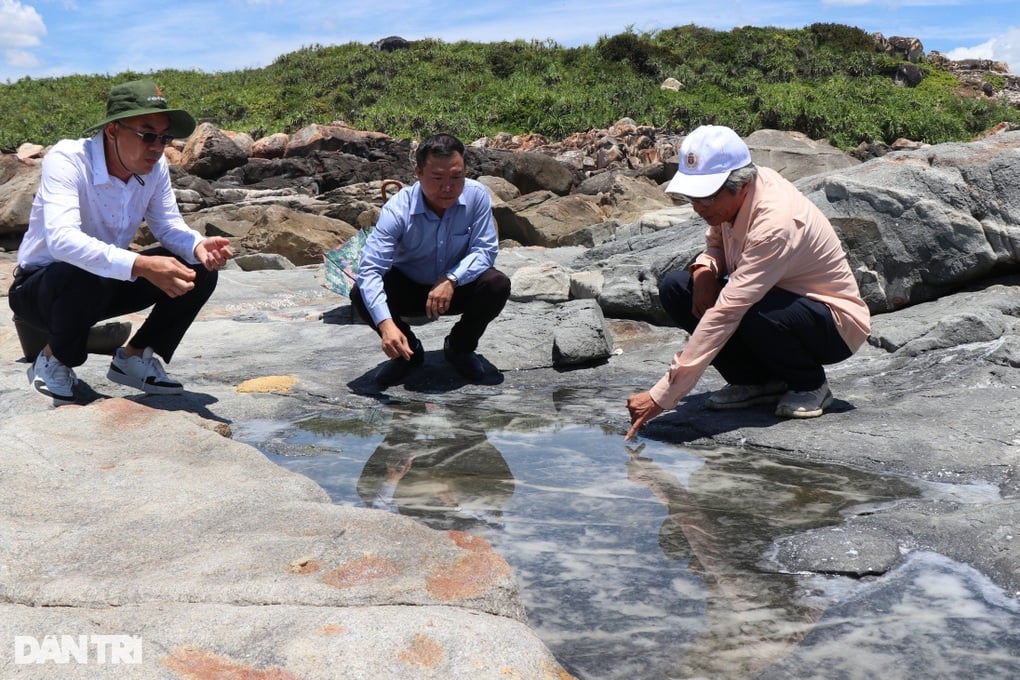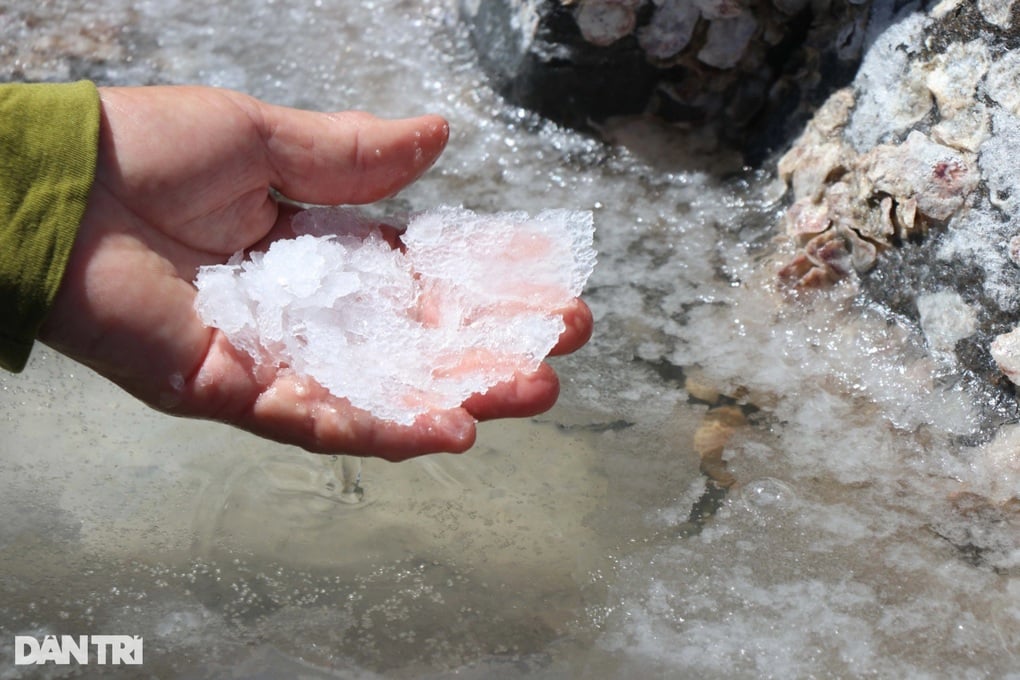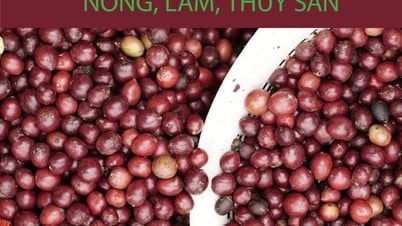(Dan Tri) – Experts have just discovered in Quang Ngai a salt-making area on rocks that is about 2,000 years old. This area is 10 hectares wide and includes natural seawater reservoirs and salt fields on the rock surface.
Dr. Doan Ngoc Khoi, Deputy Director of the Quang Ngai Provincial Museum, said that he had just discovered an area used by the ancient Sa Huynh people to make salt. This area is located in the space of the Sa Huynh Cultural Special National Monument.
This area is called the salt flat, dating back about 2,000 years. The salt flat covers an area of about 10 hectares in Long Thanh 2 village, Pho Thanh ward, Duc Pho town, Quang Ngai province.

Researchers study the method of making salt on rocks of the ancient Sa Huynh people (Photo: Quoc Trieu).
The ancient Sa Huynh people took advantage of the rock foundation and available seawater to make salt for daily use.
When the tide comes in, seawater flows into natural reservoirs along the coast. Sunlight causes the water in the reservoirs to evaporate, increasing the salinity of the remaining water.
Then the ancient Sa Huynh people took water from the reservoir and poured it into the salt fields. The salt fields are small cells on the rock surface, which are either natural depressions or were created by people using clay to build banks.
About 3 days later, the seawater in the stone cells evaporates and crystallizes to form white salt. On average, one stone cell produces 2-3kg of salt.
According to Dr. Doan Ngoc Khoi, in the process of researching Sa Huynh culture, researchers are very interested in the pottery and salt making techniques of the Sa Huynh people.
Previously, archaeologists only excavated jar tombs and Long Thanh relics but did not discover any traces of salt making.

Salt made on rocks is very white and clean (Photo: Quoc Trieu).
Therefore, the discovery of the ancient Sa Huynh people's rock salt making site has great significance, and is an important basis for comparing the salt making area of the prehistoric Sa Huynh residents with the salt making areas in Southeast Asia and Asia.
Researchers continue to collect artifacts for analysis to find the standard age of salt production. The analysis can start with shellfish samples collected at salt flats, or petrographic analysis to know the structure of the salt flats' surface and the abrasion of the rocks.
Source: https://dantri.com.vn/xa-hoi/phat-hien-trang-muoi-da-2000-nam-tuoi-cua-nguoi-sa-huynh-co-20240712115154508.htm







































































































Comment (0)